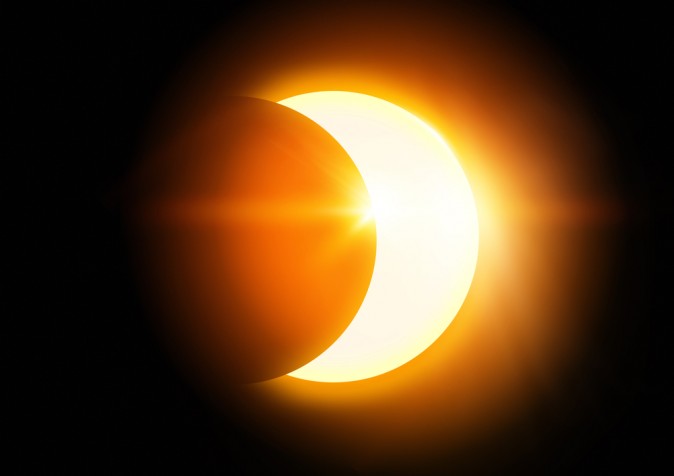Solar Eclipses (Grades 3-4)
Topic outline
-
-
ForumHere educators can share links and pictures, along with discuss anything related to solar eclipses
-
This website features an eclipse countdown along with various events and workshops happening around the United States of America
-
-
Before we get into a Solar Eclipse, let's talk about what an eclipse is in general.
In space, an eclipse happens when one object blocks another so an observer cannot see it. From Earth, there are two kinds of eclipses that can be seen. Those two eclipses are Lunar eclipses and Solar eclipses. In these activities, we'll be talking about solar eclipses.
A solar eclipse occurs when the Moon passes in front of the Sun, which causes a shadow to fall on certain parts of the Earth. For the people in the shadow, it looks like the Sun has gone dark.
This short clip by Bill Nye goes over what is a solar eclipse
-
This link from kidsastronomy features a short simulation about why and how a solar eclipse came to be.
-
-
Depending on where you are in the Sun's shadow, you might see one of three different types of solar eclipses. Let's take a look a the different types of solar eclipses.
Total Solar Eclipse

A total solar eclipse occurs when the Sun has been completely covered by the Moon. These kinds of eclipses last only a few minutes (7 minutes and 31 seconds at most) and it would appear as if the Sun was darkened out, with only a pearly glow from the Sun's gaseous outside.Partial Solar Eclipse

A partial solar eclipse is what you see when only a part of the Sun is covered by the Moon. What you'd see in the sky (with proper protection or using a pinhole projector) is the Sun with a chunk of it darkened out. Depending on where you are, the chunk of the sun that is covered may be bigger or smaller.
Annular Solar Eclipse

An annular solar eclipse occurs when the Moon completely covers the Sun, but the Sun can still be seen around the edges of the Moon. Due to the shape of the Moon's orbit, the Moon sometimes appears smaller in the sky than normal.

-
Listed below are links to various activities on modelling solar eclipses. Please feel free to share any links that may be helpful in the Educator Forum. This activity will be updated as needed.
-
This webpage features a lesson on modelling solar eclipses in the classroom. Includes instructions, photos and discussion questions.
-
This webpage by the Stanford Solar Center features instructions on two different methods of modelling solar eclipses.
-
-
It is very important that you should NEVER look at a solar eclipse directly
The Sun's rays can be very harmful to your eyes, even with the sun being blocked by the Moon.
Instead, special glasses can be used to view a solar eclipse.These aren't the same as sunglasses and in fact, sun glasses should never be used to view a solar eclipse. Another way a solar eclipse can be seen is using a pinhole projector. Instructions for making a pinhole projector can be found below in video form and as a link with text instructions
Please have a Teacher or Adult assist when making the pinhole projector
This video by NUSlife goes over how to make a pinhole projector
-
This page by KidsEclipse includes text and picture instructions in order to make a pinhole projector.
-
This is one website where you can buy solar eclipse glasses.
Note- There are other websites that provide solar eclipse glasses. Feel free to recommend them in the Educator forum.
-
-
-
Please complete this survey so we may improve this course for present and future students
-
